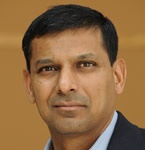RBI chief bats for ‘Make in India for India’ as export-led models flounder
24 Aug 2015
 Export-led growth is increasingly becoming untenable in an uncertain world and India should look more at import substitution rather than export push as it is the better option, RBI governor Raghuram Rajan said today.
Export-led growth is increasingly becoming untenable in an uncertain world and India should look more at import substitution rather than export push as it is the better option, RBI governor Raghuram Rajan said today.
Speaking on `Strong Sustainable Growth for the Indian Economy' at the inauguration session of Ficci-IBA-BCG FIBAC meeting, the RBI governor reiterated his earlier stance that Prime Minister Narendra Modi's `Make in India' vision should be read as `Make in India, Largely for India' to successfully implement it.
FIBAC is a thought leadership summit jointly hosted by Federation of Indian Chambers of Commerce and Industry, Indian Banks Association and Boston Consulting group.
With advanced economies still growing slowly and several emerging economies, including China, floundering at the export-led growth model, Rajan said, the situation offers both a challenge and opportunity for countries like India.
''Challenge because the world will not provide the strong and supportive growth environment we had in the last decade, opportunity because global capital is looking for investment opportunities,'' he said.
While global trade continues to fall, he said, we will have to strengthen the domestic market so as to absorb much of the increased production until the global market recovers.
''This means we have to increase domestic demand, while avoiding the booms and busts that typically plague such efforts by emerging markets,'' he said.
He said the RBI is supporting the government move for structural reforms by creating conditions for strengthening and sustaining growth.
''Two weeks ago, the government announced Indradhanush, last week we licensed new payment banks, next month we will license new small finance banks, two new universal banks are starting in October, the providers of the TREDs [trade receivables system] system will be licensed in November, and so on, but these developments are best left to a future speech.''
He said India' economic growth is now stronger, the current account deficit has narrowed significantly, the fiscal deficit is on a consolidation path, and inflation has halved, adding, three areas are still ''work in progress'' from RBI's perspective.
However, he said, economic growth is still below levels that the country is capable of. And, while consumer price inflation has moderated, inflation expectations amongst the public are still high, creating a gap between the real rates that savers expect and the rates corporations think they pay. Also, assets in the financial system continue to be high, which holds back growth and new lending, even while dampening bank incentives to cut base rates.
RBI, he said will focus on helping growth by bringing down inflation and clear channels of bank credit by resolving issues of bad loans.
''The short term macroeconomic priorities of the Reserve Bank are therefore helping growth by bringing down inflation in line with the proposed glide path, thus creating room for monetary easing; and work with the government and banks on speeding up the resolution of distressed projects and cleaning up bank balance sheets.''
With commodity prices declining and government in better control of its food stocks, Rajan said, part of our work on inflation fight is done, without India having to undergo the kind of extreme demand compression that was seen in the ''Volcker disinflation.''
''Indeed, with real expected policy interest rates in the 1.25-1.5 per cent range and real after tax deposit interest rates barely positive, it would be hard to argue that the disinflationary glide path the RBI has embarked on is extremely onerous.''
While low inflation for a while will lower the public's inflationary expectations and increase their real disposable income, in order to achieve a sustainable victory against inflation the public has to believe that inflation will stay low even after commodity prices start picking up in the future. For the public to look through future price spikes without raising wage demands, the RBI has to have credibility that it will act firmly against any future inflationary threats, he said.
The statement ''Inflation is low, you can now turn to stimulating growth'' also perhaps reflects a misunderstanding of how central banking works.
''Monetary policy'', he said, ''works with a lag of 3 to 4 quarters. So in deciding policy today, we need to predict how inflation will look approximately a year ahead. Today's inflation therefore matters only in informing us about future inflation.''













.jpg)






.jpg)









